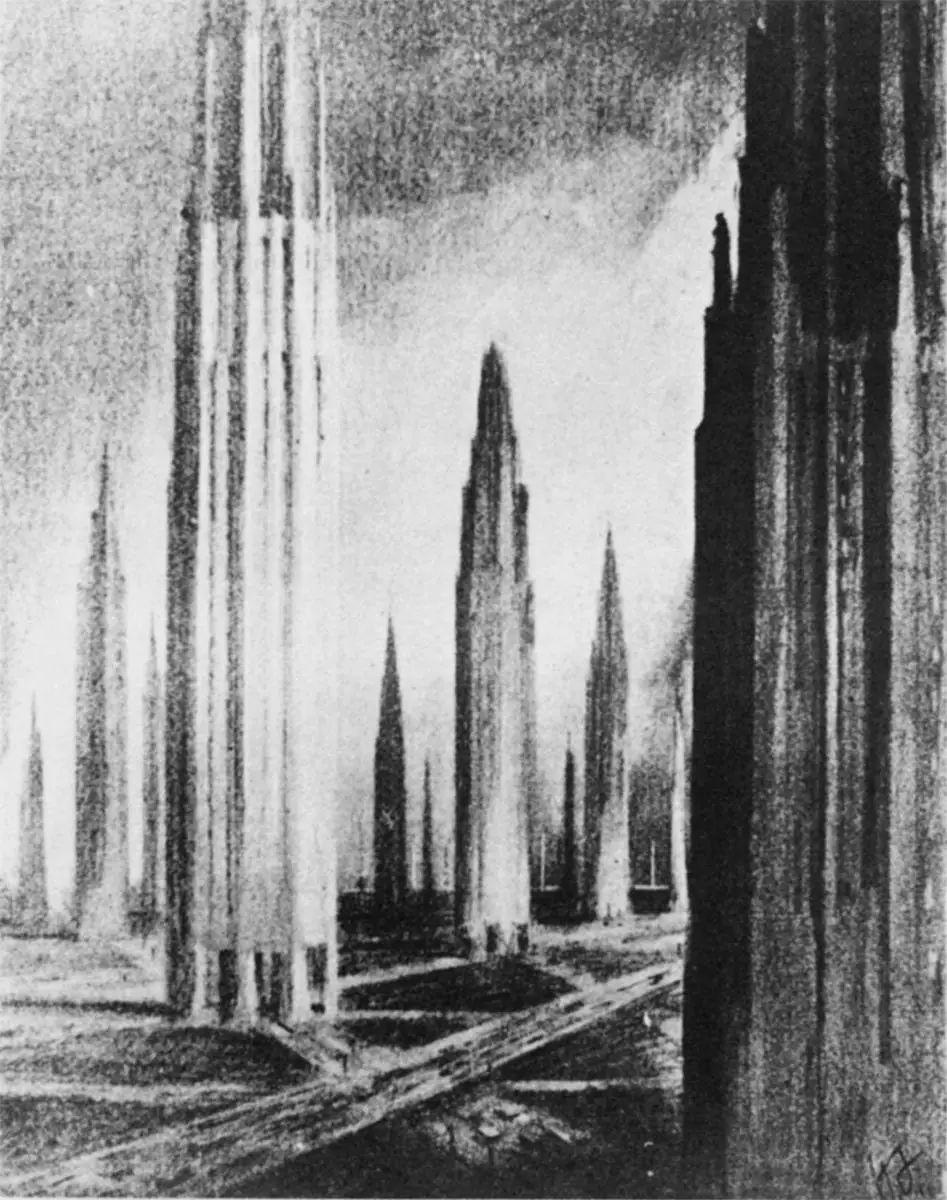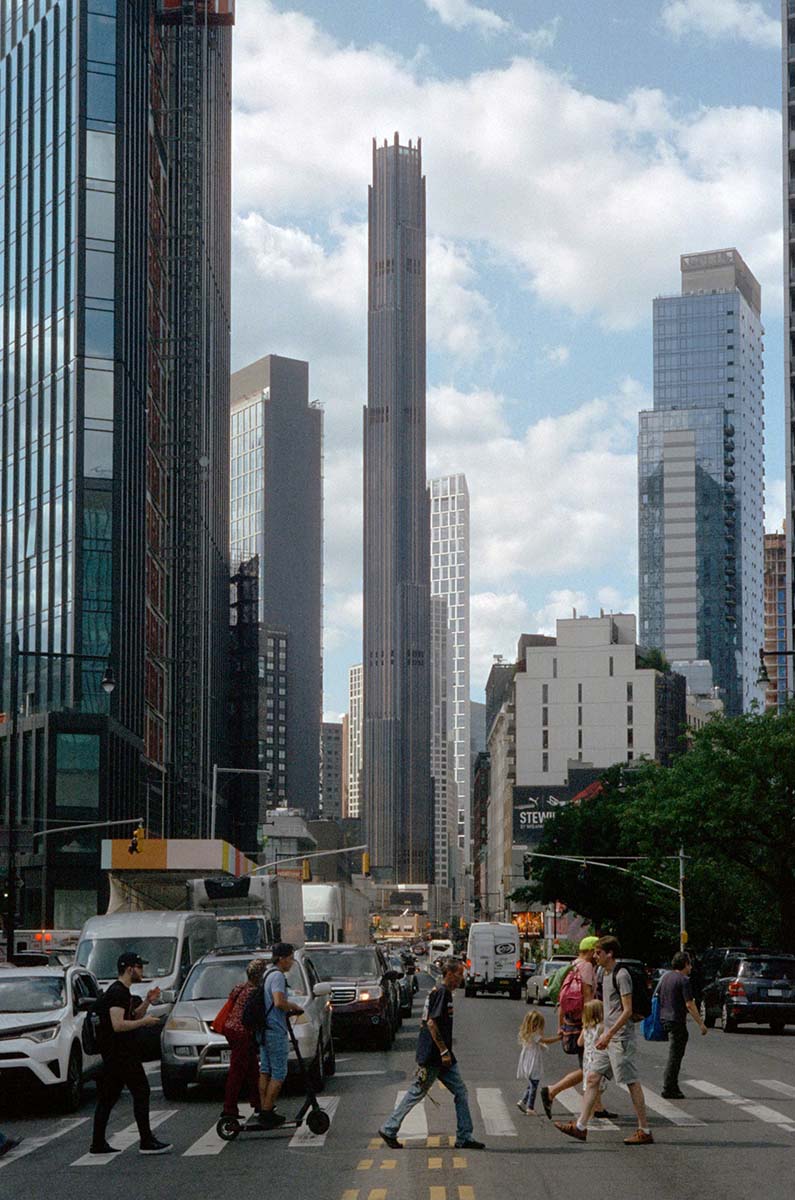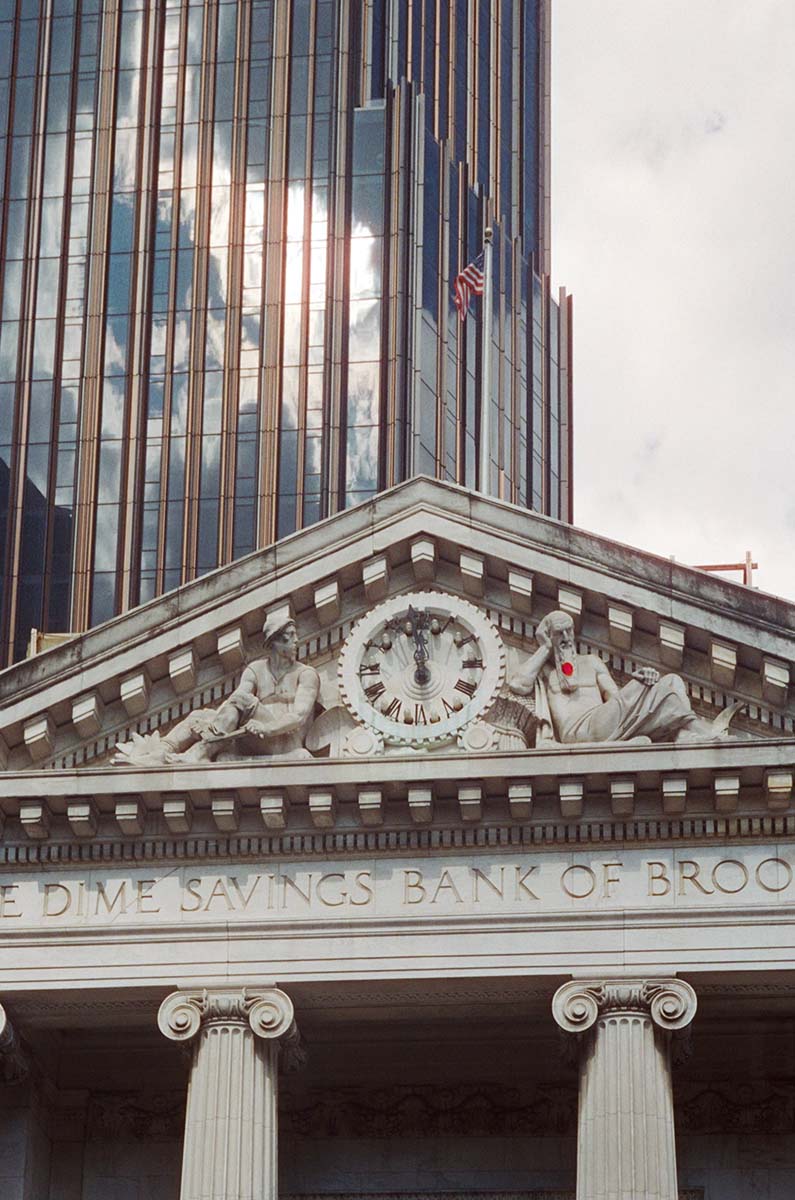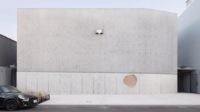If the avant-garde architects of a century ago liked to invoke the unity of the arts represented by the Gothic era—in 1919, Walter Gropius argued that modern society needed to facilitate “the rebirth of that spiritual unity which found expression in the miracle of the Gothic cathedrals”—it was not because the arc of the 20th century tended toward such cohesion. In retrospect, these invocations seem more like acts of protest against the very opposite condition: the dissolution of architecture into a set of ever-multiplying specializations that no individual could hope to govern. In place of the master builder, the regime of economic efficiency began to dictate each aspect of building according to its own ruthless logic. If in 1950 Frank Lloyd Wright’s S.C. Johnson Research Tower in Wisconsin could still be reasonably described as an American Gesamstkunstwerk—a total work in which everything from the cantilevering structure to the custom furnishings served a unified purpose—no similar thing can be said of the skyscrapers of today. In all but those cases where a brand-name architect is brought in for a statement building, massing tends to be a product of real-estate economics and zoning laws, structure is the most expedient code-compliant option devised by engineers, and interior planning is highly formulaic.

Hugh Ferriss’s A City of Needles (1924), illustrating the architect Raymond Hood’s proposal for a future city of widely spaced supertall towers. Click to enlarge.
Such is the world into which the looming 1,066-foot Brooklyn Tower, the borough’s tallest by far and its first to attain the status of “supertall,” has arrived. Linked at its base to the Beaux-Arts Dime Savings Bank at the intersection of Fleet Street and DeKalb Avenue, the dark hexagonal tower rises forcefully, narrowing as setbacks cut into each of its sides—a lengthy Gothic shadow of the Neoclassical neighbor from which its geometries are derived, perhaps, or a realization of the forbidding “metropolis of tomorrow” imagined by Hugh Ferriss. In the sea of repetitive slabs that has come to define downtown Brooklyn, this tower stands apart, an ominous mass rendered scaleless by a skin of black glass and arrhythmic pattern of glinting fins. Observers have likened it to something out of Gotham City or Lord of the Rings. A friend of mine who lives nearby went so far as to link it to Edmund Burke’s notion of the sublime: something vast and infinite, designed “to excite the ideas of pain, and danger,” as Burke put it.
And all this despite the tower’s architect, Gregg Pasquarelli of SHoP, facing the same constraints as everyone else, from intricate building codes to the need to allocate square footage with maximum efficiency and that ultimate criterion—the tower’s chances of profitability in the eyes of financial backers. SHoP’s achievement, then, is creating a work of “capital-A Architecture” within and in spite of an economic system that is indifferent to the concerns of architecture as a discipline. We are not dealing with yet another attempt to dress up the ordinary products of the building industry in elegant garb; that one can vehemently like or dislike this tower is a sign that it is something far more interesting. Indeed, this is architecture that attempts a serious undertaking—to provoke its audiences to contend with what it means to build such a tower in Brooklyn today.

SHoP’s Brooklyn Tower asserts itself amidst a sea of slab residential towers in downtown Brooklyn. Photo © Yaxuan Liu

The dark verticality of the tower contrasts sharply with the neoclassicism of the Dime Savings Bank at its base. Photo © Yaxuan Liu
Needless to say, in the shrinking of the domain of Architecture, where architects no longer have control over many aspects of their projects, much has been lost. The Modernist ambition to remake social relations by reconfiguring the built world would seem to be a particularly tragic casualty, though its causes of death are multifold. But, unlike Rem Koolhaas’s OMA and its many disciples, SHoP has not responded to the present situation by attempting a latter-day resuscitation of that ambition. The Brooklyn Tower neither seeks to disrupt or reconfigure how its occupants live, nor to mount a critique of the institutions that created it. The building is unapologetic as a moneymaking proposition on the part of its developer, Michael Stern’s JDS Group, and it has been a success so far: even though the tower’s interiors will not be complete until 2024, the expansive, multimillion-dollar condos on its upper floors are already selling briskly, according to JDS managing director Marci Clark. Even its rent-controlled apartments—the inclusion of which earned JDS a tax break—start at more than $2,600 per month.
The genre of the “pencil tower,” those super-skinny supertall residential buildings made famous by Manhattan’s so-called Billionaire’s Row, one designed by SHoP, may well represent what is decadent and unequal in the 21st-century American economy—and the arrival of the first such tower in Brooklyn serves as yet another reminder that wealth inequality in New York does not respect borough boundaries. Where the Brooklyn Tower goes beyond profiting its developer and begins to take on a greater significance is precisely in its open acknowledgement of these realities. The menacing effect of the exterior, created through the relentless verticality and Gothic articulations of the dark facades and through the building’s Ferriss-like setback massing, becomes a flirtation with the image of evil and an open-ended comment on how the tower is perceived: it might be evil, or it might just know that we think it’s evil. Perhaps, the tower implicitly suggests, a building produced by the dark forces of modern capitalism should illuminate those forces rather than wear false teeth.
In these ways, the tower makes public debate over the changing face of the city a subject of architectural aesthetics, and in so doing it enters into lively dialogue with its surroundings. Seen behind the cheery Junior’s restaurant near its base, or from nearby Fulton Mall, the tower becomes an arresting backdrop for the theater of everyday Brooklyn life. Seen from a mile or so south, where it appears to stand directly on axis with Flatbush Avenue, it develops a more complex relationship with the Romanesque Revival Williamsburgh Savings Bank Tower, which was completed on the eve of the Great Depression and held the title of Brooklyn’s tallest building until 2009. If the two are linked by a shared history—Halsey, McCormack & Helmer, the firm that designed the tower, renovated and expanded the Dime Savings Bank in the early 1930s—and by their embrace of historical references, they could hardly be more different in outlook. The optimistic projection into the future of the roaring 1920s has given way to the contradictory attitudes of the present, when the technical and economic achievement of rising 1,000 feet into the sky is blunted by critiques of how such buildings ultimately serve the city.
That the Brooklyn Tower manages such heavy architectural lifting without the budget and freedom afforded by, say, a cultural commission, is a rare feat. The best analogues may be the “decorated sheds” of Venturi, Scott Brown, and Associates, in which the most ordinary of structures become forceful works of social commentary. But for Venturi and Scott Brown, these works constituted a pained lament of architecture’s retreat from an enterprise of social transformation to one of surface decoration, revealing, as the theorist Manfredo Tafuri argued, “the very depths to which one who still wants to make ‘Architecture’ is confined.” The Brooklyn Tower shares little of Venturi and Scott Brown’s pessimism; it does not seem bothered about Architecture’s reduced domain. Its self-consciousness about its place in the city is ultimately a product of architectural confidence: it finds in the present situation the exciting possibility that the ordinary might yet be made extraordinary again.






Post a comment to this article
Report Abusive Comment